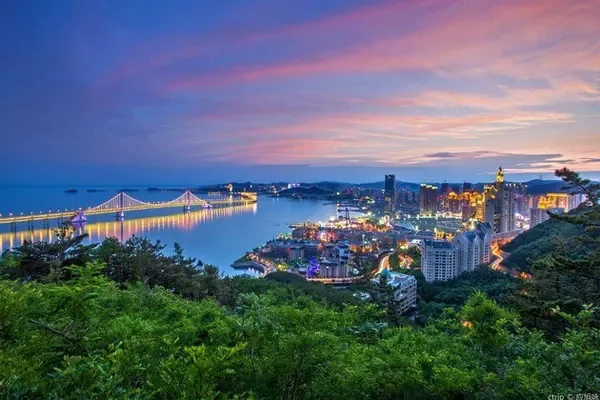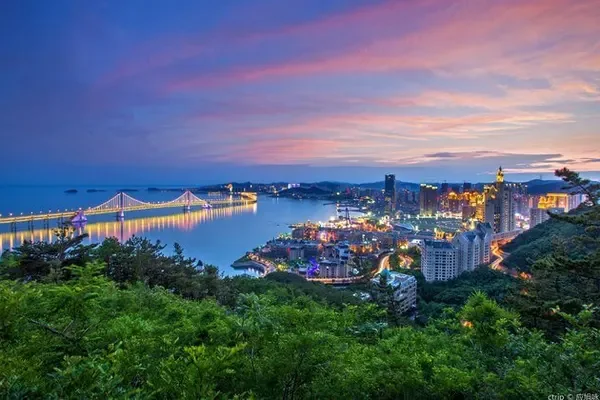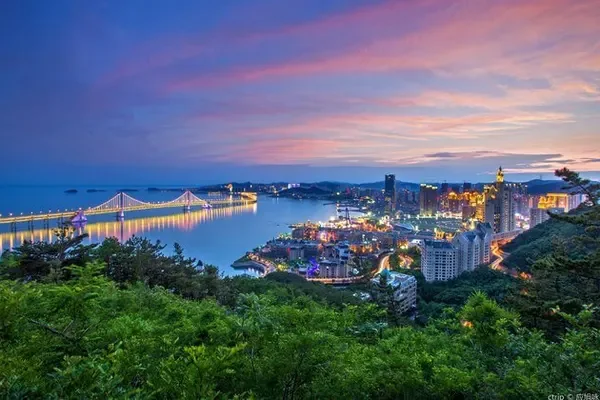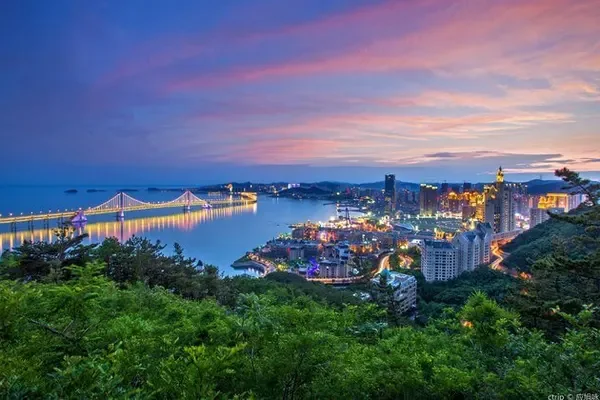In a corner of the north of Beijing, a thousand-year-old temple, the reputation of Hongluo Temple has been resounding for thousands of years in the northern land. Timeless and beautiful, Hongluo Temple is located at the southern foot of Hongluo Mountain, 5 kilometers north of Huairou District, Beijing. It has a long history and a brand-new decoration. Hongluo Temple was built in the fourth year of Xiankang in the Eastern Jin Dynasty (AD 338), with a history of nearly 1700 years. Originally named "Daming Temple", it was renamed "Huguo Zifu Temple" during the Zhengtong period of the Ming Dynasty. Later, it was commonly known as "Hongluo Temple" because of the wonderful legend of the Hongluo Fairy.



Hongluo Temple is built according to the mountain, with rigorous layout, magnificent momentum, and row upon row of ancient buildings. After a winter snow, people can deeply feel the beauty of ancient Chinese architecture and feel the shock brought by the thousand-year history here. Relying on Hongluo Mountain in the back and facing Hongluo Lake in the south, it is full of beauty surrounded by mountains and rivers, and shows its special appearance in the rich forest and lush trees, forming a beautiful picture of "Bibo Zang Ancient Temple". The bamboo forest in front of the mountain gate was planted in the Yuan Dynasty. It has a history of more than 600 years and is evergreen all the year round.

According to the "Huairou County Chronicle" records: In the 32nd year of Emperor Kangxi of the Qing Dynasty (1694 A.D.), Shengjia Hongluo Temple dropped incense. Seeing this green bamboo forest was very novel, even the officials around him counted the number of bamboos as 613. Before leaving He told the monks in the temple and local officials to protect the bamboo forest so that he could come to see it often. Later, people called this bamboo forest "Royal Bamboo Forest". In the northwest corner of the bamboo forest, there is also a "Bamboo Viewing Pavilion" restored as it was. Emperor Kangxi of the Qing Dynasty once set up a royal seat in the original pavilion to appreciate bamboo. The bamboo forest in Hongluo Temple is evergreen all year round and grows luxuriantly. There are about one million bamboos. It is known as one of the "Three Wonderful Views of Hongluo".


Walking through the quiet path of the Royal Bamboo Garden, one suddenly becomes enlightened. The breeze blows through the forest with the chirping of magpies. The mountain spring water flows down from the valley and gathers in the small lake in front of you. A pair of fairies stand gracefully in it. The two red snails are particularly eye-catching, and a white ribbon has been added between the spiral lines by the previous heavy snow. The simulated flower scenes such as plum blossom and peach blossom also bring a touch of spring in the snowy winter.


The name of "Hongluo Temple" comes from a beautiful legend. According to legend, the two princesses of the Jade Emperor felt that the life in Tiangong was too cold and lonely, so they went down to earth together. They came to a big mountain, where the mountains and rivers depend on each other, the ancient trees are towering, and there is an antique temple hidden in the greenery. From time to time in the elegant and solemn monastery, the sound of the wooden fish, as well as the sound of reciting scriptures, can be heard. This is not a fairyland but it is better than a fairyland, which deeply moved the two princesses. The idea of the two princesses living here for a long time came naturally. They turned into a pair of big red snails, living in the lake in front of the temple. During the day, they turned into human bodies to worship the Buddha and chant scriptures with the monks in the temple; at night, the two princesses turned into red conch shells and emitted thousands of red lights, illuminating the temple and the foot of the mountain red. They also use their divine power to secretly protect temples and local people. Since then, the weather here has been smooth, the forests are luxuriant and the food is abundant. The people are all grateful for the kindness of Fairy Hongluo. In the Yuan Dynasty, the Jade Emperor recalled them to the Heavenly Palace. In order to commemorate the two Hongluo fairies and hope that one day the fairies will return to this place, people call the mountain on the north of the temple Hongluo Mountain, the lake on the south of the temple is called Hongluo Lake, and the temple is also called "Hongluo Temple". "Are.


Overlooking Hongluo Temple from the air, its architectural structure is quite classic, and its architectural form is also unique to the north. Surrounded by mountains and rivers, Hongluo Temple is divided into middle courtyard, east cross courtyard, west cross courtyard, east lower ridge, west tower courtyard, etc. There are five courtyards and 244 rooms. The middle courtyard takes the Mountain Gate, the Hall of Heavenly Kings, the Hall of Great Heroes, and the Hall of the Three Saints as the axis, and there are four side halls in the east and west; The east courtyard is the reception area; the west courtyard is the abbot's retreat house and the Shifang hall; the east lower kan is the old monk's retreat house and Yancho hall in the north, and the south is the practice field; the west upper kan is the snail pagoda and the ashes hall.


Strolling in Hongluo Temple, you can not only appreciate the excellent natural landscape, but also feel a very strong cultural and historical atmosphere. Just as the Spring Festival of the Year of the Gengzi Rat is approaching, Hongluo Temple also combines Chinese New Year custom culture with its own folk culture. It uses 5,000 palace lanterns, 4,000 lanterns, various artificial flowers, and red silk ribbons to decorate all areas in the park. The layout is full of New Year's flavor.



Since the establishment of Hongluo Temple, there has been an endless stream of devotees and believers, and it is very popular. On certain days or periods, people will come here to pray, mostly for marriage and studies. From the blessing ribbons hanging everywhere, it is not difficult to see that the folk culture of Hongluo Temple has long been deeply rooted in the hearts of the people, and some foreign friends can be seen here from time to time. It is conceivable that the rich and colorful folk culture content of China since ancient times has already drifted abroad. Across the sea, spread to the world.



Although the winter in the north is cold and cold, it is full of depression, but you can feel the deep warmth when you walk into Hongluo Temple. Whether it is the palace lanterns with the word "Fu" covering almost all routes, or the giant lantern promenade, we can experience the lively atmosphere of the Chinese New Year. Regardless of whether it is "Friendly Blessing", "Patriotic Blessing", "Harmonious Blessing", "Prosperity Blessing" or the most rare "Dedication Blessing" and "Family Blessing", in Hongluo Temple, where you can see blessings when you look up, you can see them all. Let you be blessed and full of happiness.



In addition to watching, the experience is naturally indispensable. The "Blessing Clock" outside the mountain gate is very popular. The sound of ancient temple bells is a very wonderful thing. Exciting. From one to ten, there are different beautiful meanings. The melody of the bell echoes far and wide, and it also symbolizes the health and safety of those who pray.


As a long-standing folk cultural symbol, the zodiac has left a large number of poems, spring couplets, paintings, calligraphy and painting and folk crafts depicting the image and symbolic meaning of the zodiac. Each zodiac has rich legends, which form a conceptual interpretation system and become an image philosophy in folk culture, such as the zodiac signs in marriage, prayers at temple fairs, and the year of birth. In modern times, more and more people regard the zodiac as the mascot of the Spring Festival and the symbol of entertainment and cultural activities. In the Twelve Zodiac Garden of Hongluo Temple, the mascot of Kang Zinian - "rat" was decorated with great fanfare, and a special blessing wall was set up, which is also the most attractive place for tourists. Competing to take a photo with the mascot of the Gengzi Year "Rat" to make a good fortune.



There are various forms of praying, not only because it is the folk culture of the Chinese since ancient times, but also because they hope to change the way of life and entertainment in the busy work, such as on the Yuelao prayer wall next to the Guanyin Temple. There are roses hidden in the long beard of Yuelao. You can go forward and take one as a gift to your loved one. There will be a unique sentence on this unique rose, which is very sweet.

Although Hongluo Temple is a good place for hiking, it can’t avoid some tourists who have limited mobility or don’t want to climb the mountain. Just like going to Guanyin Temple, it’s better to take the slide to go up and down the mountain. The whole journey is 2.3 kilometers, and the uplink is 800 meters Pulled by cables and escorted by staff, you can not only enjoy a leisurely journey, but also experience the "thrilling" slide "downhill". Of course, if you don't like too exciting, you can inform the staff in advance.


The Chinese New Year is the favorite festival of the Chinese people. Every place will hold various activities during the New Year. Hongluo Temple is no exception. New Year's prayer, New Year's blessing, appreciating homemade palace lanterns, guessing funny lantern riddles, appreciating "Three Friends of the Winter", watching traditional activities that are popular with the masses, such as dragon dance, Chinese flag, lion dance, and small acrobatics. Birds, ceramic paintings, folk flower show performances and other intangible arts in Huairou District that reflect the local cultural characteristics of Huairou, as well as straw weaving, gourd pyrography, tea soup, sugar figurines, sugar paintings, dough figurines, carved lacquer, inner paintings, facial makeup, windmills, comics, etc. There are many intangible cultural heritage items such as statues, dragon and phoenix characters; and a series of activities such as the New Year Photo Contest of Hongluo Temple in My Heart. If you are lucky, you can also watch the Bougainvillea being cultivated in a closed environment.




We like to follow fashion, but there are always people who stick to tradition. At the bustling stations, people coming and going gathered into a huge Spring Festival "migration" team, and everyone was eager to return home. In a warm home, the kind eyes of the elders, the meeting of relatives and friends, the lively temple fair, and the strong nostalgia are always our strongest emotional calls. This is not only the recognition of customs, but also the fusion of long-term living conditions. It makes everyone Chinese people have formed a collective identity, thus constructing the traditional value concept of the Chinese nation-Chinese New Year. As one of the most important activities during the Chinese New Year, temple fairs and Lantern Festivals carry countless people's needs for "New Year taste", whether it is fashion or tradition. The "New Year's taste" of the Spring Festival has always penetrated into every inch of Chinese people's skin. This invisible and huge force has flowed into our blood and engraved into the depths of our memory. This is the "annual ring" that belongs to us Chinese. ".


Walking through the five blessing gates and blessing cards that symbolize auspiciousness; wearing a traditional Chinese auspicious belt; posting a blessing sticker high on the blessing wall can not only feel the festive and strong atmosphere of the festival, but also reflect the rich and colorful blessing culture. The activities and unique scenes of Buddhist cultural gardens outline the auspicious scene of "the sky is full of red snails, the sky is full of blessings, and the garden is full of green sea, kind clouds and spring". This Spring Festival, let us meet at Hongluo Temple to celebrate the prosperous Chinese New Year.




